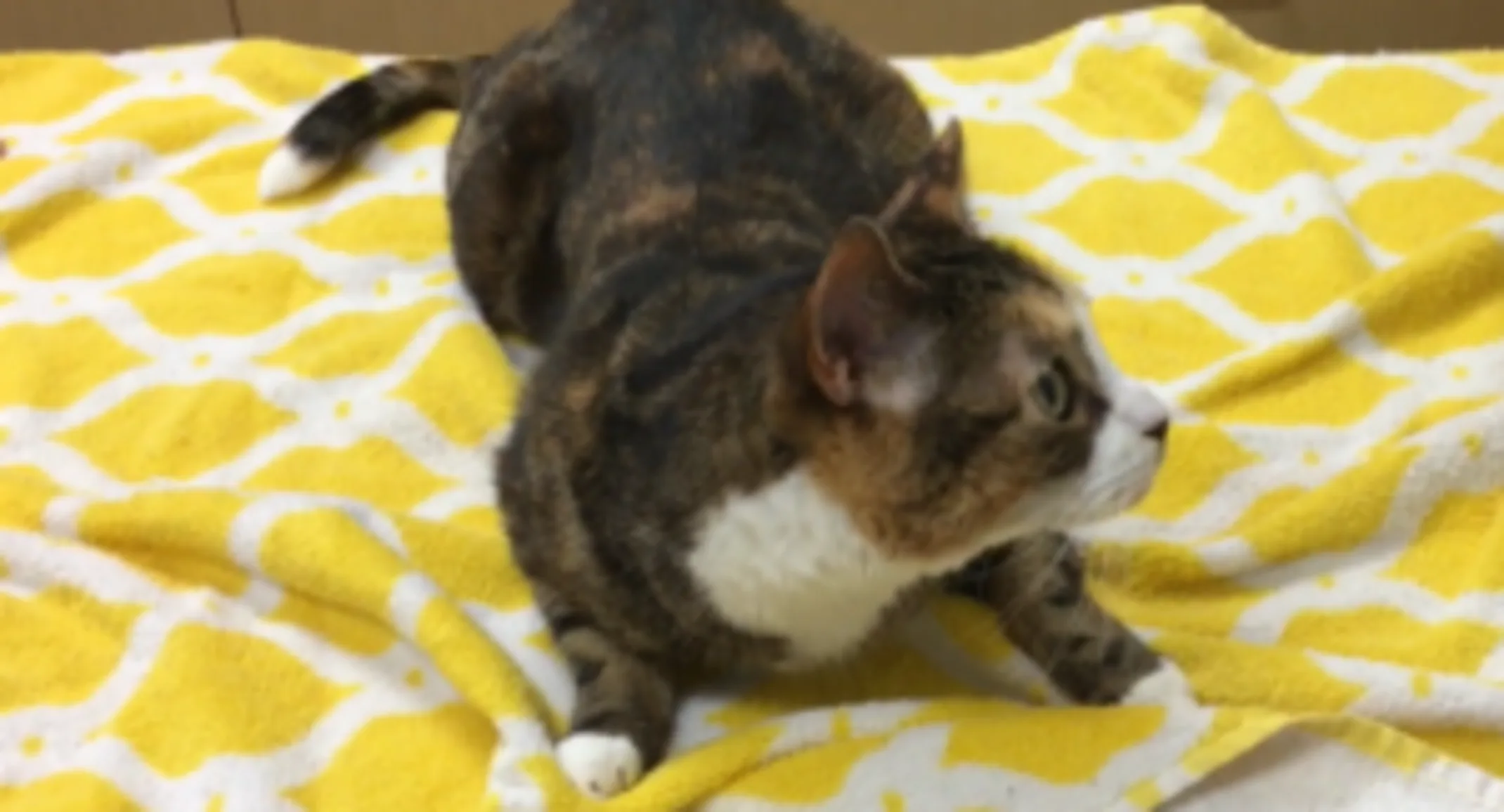Henrietta
2023

MEET HENRIETTA
Henrietta is a four-year-old spayed female cat whom presented with a sudden onset of abnormal head movements. When a patient presents for abnormal head movements – what would you do? The best approach is to localize the lesion and create an accurate list of possible causes for the symptoms. What do you think? Our thoughts are below.
BACKGROUND
Four-years-old Spayed Female Domestic Shorthair Cat
PRESENTING COMPLAINT
Sudden onset of abnormal head movements, spacey
BEST APPROACH
Localize the lesion and create an accurate list of possible causes for the symptoms
EXAM FINDINGS
DMentation: Quiet, alert
Posture: Persistent figure 8 or side to side wide head excursions
Gait: Unwilling to walk, when prompted takes a few steps without ataxia
Postural Reactions: Normal tactile placing, hopping and paw flip test
Cranial Nerve Exam: Mild right positional strabismus and right head tilt, miosis on right
Occular / Retinal Exam: Normal
Hyperaesthesia: Normal
LOCALIZATION
Bilateral vestibular (head excursions) with sympathetic tract (miosis) and vestibular nerve (strabismus, head tilt) involvement on the right. Peripheral disease most likely (normal mentation, postural reactions) with potential middle ear invovement on the right (head tilt, miosis).
DIFFERENTIALS
Bilateral otitis media / interna (worse on right) vs idiopathic more likely than metabolic (thiamine), neoplasia (carcinoma, lymphoma) more likely than central causes infection (FIP, toxoplasmosis, cryptococcous), noninfectious inflammation, neoplasia, infarct(s), others
RECOMMENDATIONS
CBC and Chemistry were already normal and Henrietta eats a normal diet without exposure to raw fish (low thiamine very improbable). MRI recommended to assess head / middle ear / brainstem. If testing avoided, then consider 6 week trial with clindamycin for potential bacterial ear infection.
TESTING
MRI of the head is normal - further testing for central causes not pursued given examination findings
OUTCOME
Head excursions improved, then resolved over 14 days. Recheck at 3 weeks demonstrated an improved but subtle right head tilt and transient (subtle) right positional strabismus.
DIAGNOSIS
Idiopathic bilateral vestibular disease
The goal of this case report was to improve your recognition of bilateral vestibular disease and describe diagnostic / therapeutic approach.
IMPORTANT POINTS
Cats with wide head excursions localize to bilateral vestibular system AND these cats have similar differentials and prognosis as cats presenting with unilateral vestibular signs
About 1/3 bilateral vestibular cases will have a central (brainstem) localization – these cats typically have a dull mentation and delayed postural reactions. Differential causes include infection, immune-mediated diseases, neoplasia and low thiamine. Generally, the prognosis is worse for central disease compared to peripheral disease.
2/3 cats with bilateral vestibular signs have peripheral disease (curiously some of these will have postural deficits). Otitis media / interna is slightly more prevalent than idiopathic / unknown cases. Typically, all otitis will improve with treatment and most (but not all) idiopathic cases will resolve.
MRI is recommended to rule-out central causes (some central cases will not demonstrate a dull mentation or postural deficit) AND for peripheral cases, determine the necessity of treatment with antibiotics.
References
LeCouteur RA, Vernau KM. Feline vestibular disorders. Part I : anatomy and clinical signs. Journal of Feline Medicine and Surgery 1999 ;1: 71-80
Vernau KM, LeCouteur RA. Feline vestibular disorders. Part II : diagnostic approach and differential diagnosis. Journal of Feline Medicine and Surgery 1999; 1 :81-88
LeCouteur RA. Feline vestibular diseases - new developments. Journal of Feline Medicine and Surgery 2003 ; 5 : 101-108
Negrin A, Cherubini GB, Lamb C, et al. Clinical signs, magnetic resonance imaging findings and outcomes in 77 cats with vestibular disease : a retrospective study. Journal of Feline Medicine and Surgery 2010 ; 12 : 291-2995.
Lorenz MD, Coates JR, Kent M. Ataxia of the Head and the Limbs. In : Handbook of Veterinary Neurology. 5th ed. Missouri : Elsevier Saunders Co, 2011 ; 250-281
Delahunta A et al. Veterinary Neuroanatomy and Clinical neurology. 5th ed. Philadelphia, Elsevier 2021
Lamy C, et al. Bilateral Peripheral Disease in Cats; A retrospective of 35 cases. Presented at SEVEN veterinary conference, 2020
